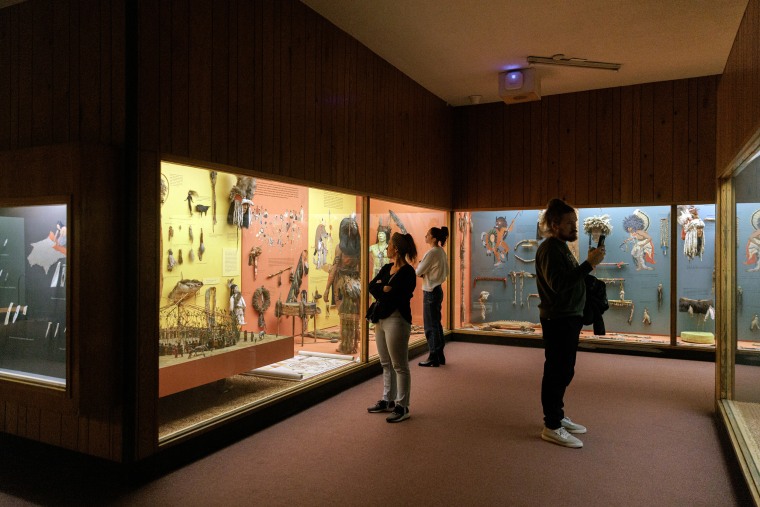New York City’s American Museum of Natural History is closing certain halls that display Native American artifacts in response to updated federal regulations that call for institutions to receive consent from Indigenous tribes to display some of their artifacts.
Beginning Saturday, the museum’s Eastern Woodlands and Great Plains halls will be closed to staff and visitors. Seven cases displaying Indigenous artifacts in other areas of the museum will also be covered. Sean M. Decatur, the museum’s president, announced the closures in a letter to staff Friday.
“While the actions we are taking this week may seem sudden, they reflect a growing urgency among all museums to change their relationships to, and representation of, Indigenous cultures,” Decatur wrote in the letter. “The Halls we are closing are vestiges of an era when museums such as ours did not respect the values, perspectives, and indeed shared humanity of Indigenous peoples.”
The regulations, which went into effect Jan. 12, have been a long time coming.
Last month, President Joe Biden signed an executive order ordering a slew of actions to support tribal self-determination. The order called for the Interior Department to announce final revisions to the Native American Graves Protection and Repatriation Act, a 1990 federal law that “provides for the ownership or control of Native American cultural items (human remains and objects) excavated or discovered on Federal or tribal lands.” The department’s updates include requiring museums and federal agencies to obtain consent from tribes before displaying human remains and cultural artifacts.
While tribal leaders have pushed for the repatriation of artifacts and remains to take place respectfully and quickly, some expressed concerns that the process of identifying the items could create an overwhelming burden for tribes, according to The New York Times. Institutions have also encountered difficulties in identifying origins of items that may have been procured in problematic and outdated ways, the Times added.
Decatur had previously announced the removal of some artifacts as part of an ongoing effort to remove most human remains from display. In October, the museum said that approximately 26% of the 12,000 individual human remains held by the museum are of Native Americans.
One major area of operation the closures will affect is school field trips, according to the letter. Some 500,000 children visit the museum each year through school or camp groups, which include stops in the Eastern Woodlands hall.
The museum joins other major institutions in removing or covering exhibits to comply with the changes. Earlier this month, the Field Museum in Chicago covered some cases featuring Native American objects pending consultation with tribes. The Cleveland Museum of Art also covered display cases this month to comply with the rule changes.
“What might seem out of alignment for some people is because of a notion that museums affix in amber descriptions of the world,” Decatur said in his letter. “But museums are at their best when they reflect changing ideas.”

